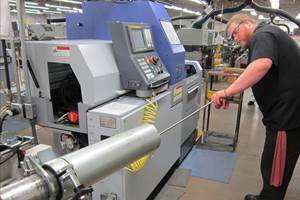New Accessories Improve Swiss Machine Performance
The sliding headstock machine design is well over a century old. Yet it continues to be renewed with developments in the application and performance of accessories within the machine.
Nothing stands still. While you’ve been prattling away at making chips, minding your business and making sure your quality was up to snuff, changes and advancements have been happening in the tooling world for CNC Swiss machines. It may be time to reconsider some of your shop’s processes, methods and even the individual cutting tools, bits and holders that you have always used. Chances are, better ways have come along. Advanced tool geometry, optimized coatings and accessories designed to reduce setup time abound. Take a moment to read about the latest advancement in CNC Swiss machines.
Perma-Plumbing
High pressure coolant delivery systems have been the standard for assisting in pesky chip control situations for well over a decade now, but many Swiss machine users are still stuck in the past with how to implement high pressure coolant delivery from setup to setup. High pressure cutting oil can be just as powerful of a tool as the carbide that is actually doing the cutting; however, it needs to be put into play, aimed and set up again every time a new job is considered. The coolant routing alone can take the better part of a day even for the most adept Swiss machinist.
Many shops are still bending and aiming steel tubing coolant jets from job to job. This takes a lot of time, is easily disturbed requiring readjustment and can be a place for material chips to collect. There are plenty of choices these days when it comes to tooling designed for high pressure coolant delivery. However, only a few choices provide the flexibility of using existing standard tool shanks in a semi-permanent coolant delivery assembly. The modern, bleeding-edge method runs low profile distributor manifolds with small-diameter piping with quick-connect fittings connected directly to specialized tool quick-change clamping wedges that integrate coolant channels internally, and then always direct oil right to the insert’s edge.
Today’s Swiss shop faces a diverse flow of work that can be changing constantly. The coolant delivery system doesn’t have to be diverse—it can be semi-permanent, thereby eliminating a lot of job change-over time, leaving more time in a shift to make chips and ensure quality.
Multi-Variable Platform Live Tooling
A great new method of reducing costs is sharing live tooling for specialized processes across machine platforms, whether it is a smaller machine model from the same machine builder or a model from a completely different builder. Now, there are live tooling choices available that can be transferred semi-universally. A system like this amortizes a specialized tooling investment across multiple machine models, adding flexibility to a shop’s capability, while reducing the live tool inventory. This system employs a base driver unit that matches the live tooling drive gear and spindle fixturing on the tool position of the given machine model. This design opens up the machine operator to an array of attachments for specialized processes such as thread whirling, gear hobbing or polygon milling.
Other attachments can be applied, such as gear-driven high speed milling units for micro-tooling or custom developed application-specific tool spindles, depending on the requirements. Do you need to deburr on the machine rather than as a secondary process? Perhaps a wirebrush attachment is in order. Is a deep-groove slotting saw application giving you fits? Maybe use a dedicated attachment for larger saw blades. With the diversification of equipment, variable platform live tooling could be a good answer for adding advanced capability while reducing overall shop costs as well.
Planetary Speed Upgrades
A recent development in the arena of high speed rotary attachments is the introduction of low profile, planetary gear-set high speed attachments for Swiss machines. This new type of drive system maintains the low profile needed to work within the tight Swiss machine workspace while delivering even faster output speeds than previous high speed attachments. In some cases, the driver can run as high as 30,000 rpm. This is perfect and invaluable for the machining of time-consuming micro features on a workpiece such as the milling of hexalobe drives on the ends of bone screws.
While even better productivity can be achieved through the increased live tooling speed, these attachments combine the ease of use and setup of previous models available. Reduced operating temperatures is an added benefit of the planetary gear-set. Using special sealing techniques and a reduced number of internal bearings, the spindle operates at a lower temperature than previous generations, resulting in long and reliable service life. Integrating this kind of attachment only takes minutes. It doesn’t require any additional wire routing or umbilical cabling. The machine operator simply installs the unit and programs one-quarter the desired output speed.
The Triple C: Cost-Cutting Carbides
With everything geared toward performance and cost effectiveness, shops look first at the kind of tools they are buying, how rapid consumption is and how much they are spending on these tools.
The cutoff/part-off tool is one major tool that about every performance turning shop focuses on to attempt budget savings. The tool is used in almost every setup (except where a saw might be used for part off) and is often subject to the most abuse or is made to do double duty, such as chamfer and part off. Additionally, the part-off/cutoff tool can be subject to some of the most extreme cutting pressures depending on the application. To maintain insert repeatability in Swiss jobs, most true Swiss-type part-off inserts are peripherally ground and have keen edges all around.
Some applications simply do not require this level of workmanship. To combat some of the more rigorous tasks while reducing the per-piece cost, new carbide grades that combine the best of a true Swiss-type tool with aspects of a robust heavy duty part-off tool have been introduced. New insert manufacturing technology can provide near-net carbide inserts, complete with integrated chip control and robust corner radii while still maintaining accurate edge location. This new technology results in optimally tuned cutoff tools that are inexpensive, while being robust enough to withstand heavy duty work and aggressive cutting speeds. When paired with optimal coating technology for the material being worked, it is a proven route to increase productivity in an enormous way.
Not Your Father’s Drills and End Mills
While on the subject of finely tuning a specific tool for the application, the best kept secrets are the great strides that have been achieved for the reliable twist drill and end mill. This is an area of tooling that many shop owners don’t necessarily consider exploring, as twist drills and end mills are a common and almost pedestrian tool when compared with something far more specialized, such as a thread whirling cutter or rotary broach.
So why use any basic tool when expert level tooling finely aimed at specific applications could lower costs? One answer might be because they’re expensive tools, which is correct, but here is where we talk price versus cost. An extra investment up front can deliver huge rewards at the end of the job. An expert geometry tool prevents downtime from tangled chips and broken edges and provides faster speeds and feeds than a generic tool in a given specialty application. All of these factors add up quickly in the form of better quality, fewer scrapped parts and less time wasted changing broken tools.
In some extreme cases, other materials are being considered for tool making. Have you ever used a micro end mill ground from super-hard white ceramic? This new tooling composition is a revolutionary method being developed to machine nonferrous materials. Initially devised for the reliable long-term production machining of pesky non-leaded brass, other nonferrous applications for this relatively new type of tool are currently being explored.
The major advantage of switching to a ceramic tool is there is almost no wear on the cutting edges when the material application, toolholding and machine tool used is ideal. Because ceramic is exceptionally hard, vibrations and rigidity of the machine tool need to be considered to make the most out of this cutting tool technology.
Make Mine Quick Change
The recurring theme of “better and faster” is a driving force across the spectrum of cutting tools. Boring operations are an often-overlooked place of improvement. These days, there are large numbers of boring tools being touted as “quick-change” and are highly repeatable as far as positioning goes. Generally, these types of tools can be for more than boring. They are complete ID working tool systems for accomplishing virtually any kind of internal work on the ID of a workpiece.
Usually, these kinds of systems employ some form of holder that performs two functions. First, it orients the cutting tool, both axially and radially, automatically providing guaranteed on-center cutting for optimal chip control, finish and tool life. Second, it provides some method of rigid clamping either via set screws or another method.
Most quick-change boring systems work in conjunction with a tool shank that accurately mates to the holder. Some use additional tools such as a locking key or a hand wrench for clamping the boring tool, where some simply require tightening by hand. The hand tightened variety tends to be one of the best since it almost eliminates distortion of the toolholder from an overtightening by an overzealous machine operator. Regardless, the type of quick-change tooling can make anyone’s job on the shop floor that much easier when setting up a job requiring a very small boring tool.
‘That’s How We’ve Always Done It’
Many of us are so busy with the daily grind that sometimes we fail to stop and evaluate the exciting new technology that can ramp up our productivity. The worst thing that can be said is, “That’s how we have always done it.” That mindset can doom growth and leave a shop missing the many benefits of today’s ever-developing new technology. You’ve invested a lot of time, money and energy in building your business. You have selected your parts machining specialty and combined it with the highest performing machines for the jobs. You have employed and trained the most talented people you could find.
Don’t stop there. Tap the world of tooling technology. That’s where new innovations open new doors. Make sure the tools making your chips are the best you can get because you shouldn’t put cheap tires on a Corvette.
— Genevieve Swiss Industries, Inc.
Related Content
Shop Sets its Sights on Precise Tool Alignment
A Wisconsin shop has found that visual tool alignment technology has improved tool life and surface finishes for its Swiss-type lathes while increasing throughput as well.
Read MoreAutomation Breakthroughs Revolutionize Precision Machining for Complex Parts
Marubeni Citizen-Cincom delivers custom solutions to address some of the biggest challenges in precision machining from handling small parts, to robot integration and unique tooling needs.
Read MoreSwiss Rejuvenation Doubles Shop Productivity
As he progressed to CNC Swiss lead and later to his current position as CNC Swiss production supervisor, Darrin Baker helped the Swiss department at Liberty Precision double its productivity, according to his nominator.
Read More6 Tips for Training on a Swiss-Type Lathe
There are nuances to training a person to effectively operate a Swiss-type lathe. A shop I visited a while back offers some suggestions.
Read MoreRead Next
A Tooling Workshop Worth a Visit
Marubeni Citizen-Cincom’s tooling and accessory workshop offers a chance to learn more about ancillary devices that can boost machining efficiency and capability.
Read More5 Aspects of PMTS I Appreciate
The three-day edition of the 2025 Precision Machining Technology Show kicks off at the start of April. I’ll be there, and here are some reasons why.
Read MoreDo You Have Single Points of Failure?
Plans need to be in place before a catastrophic event occurs.
Read More

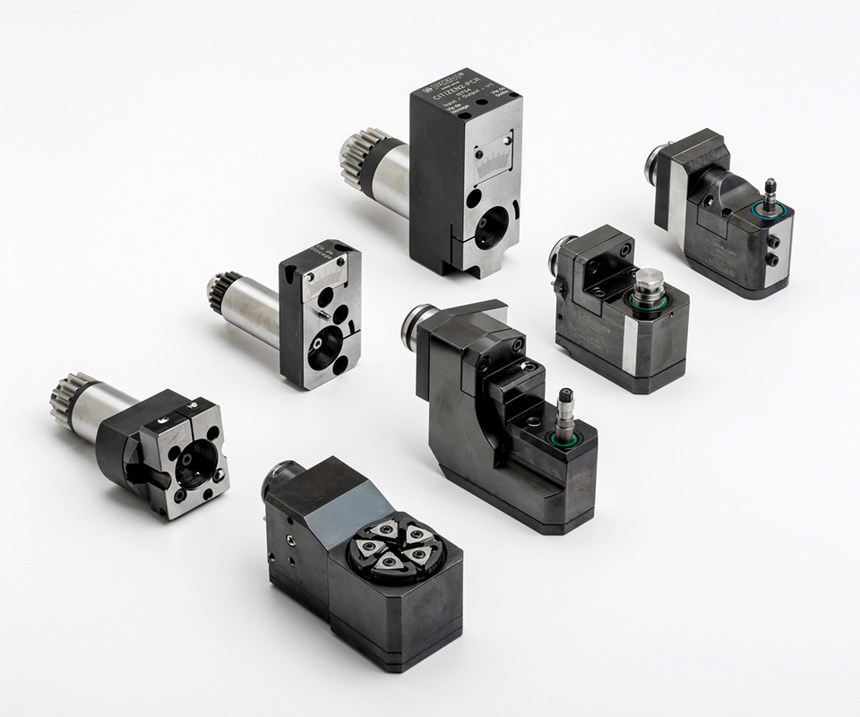
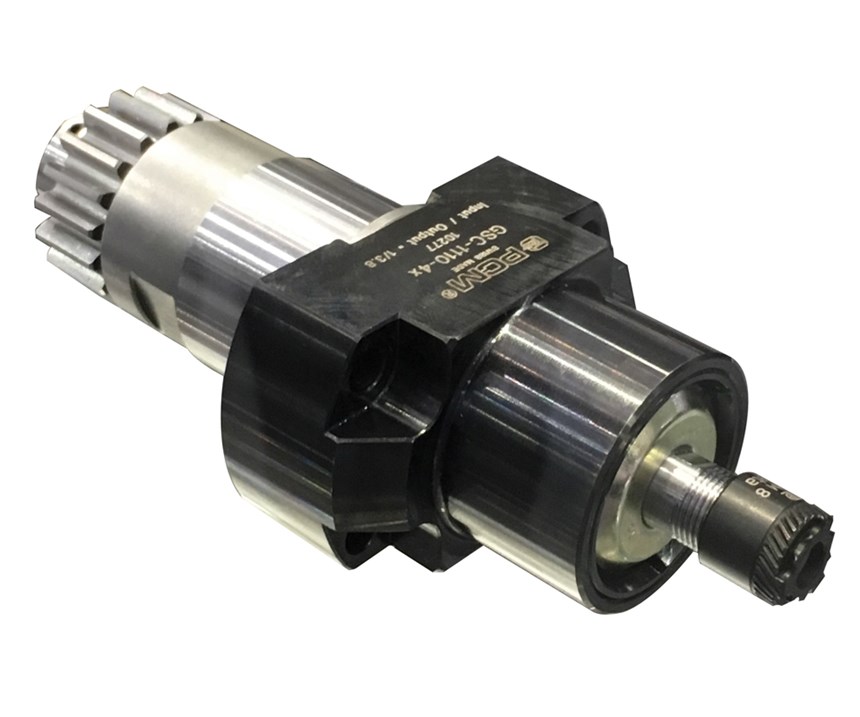
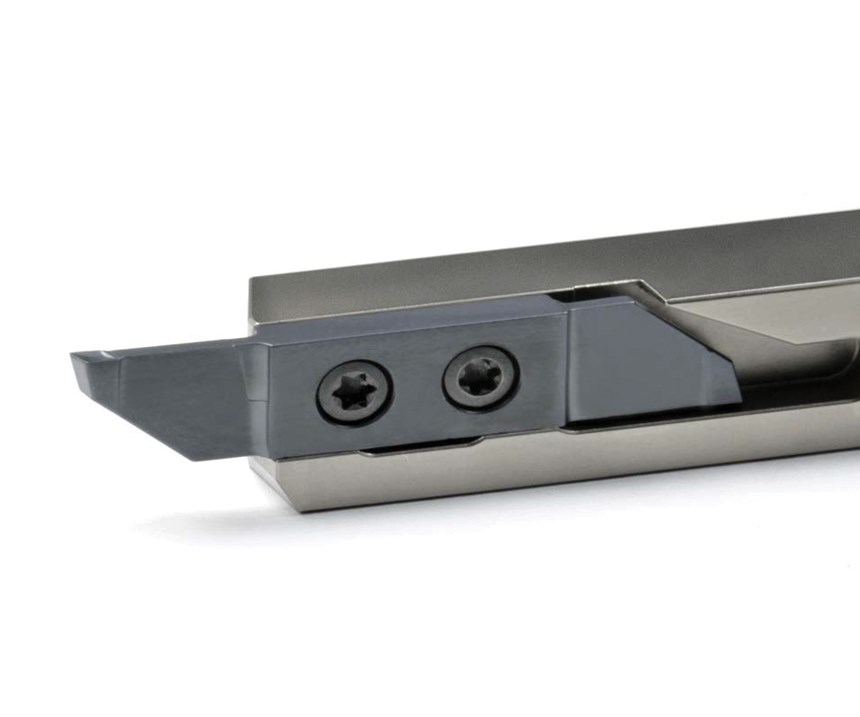
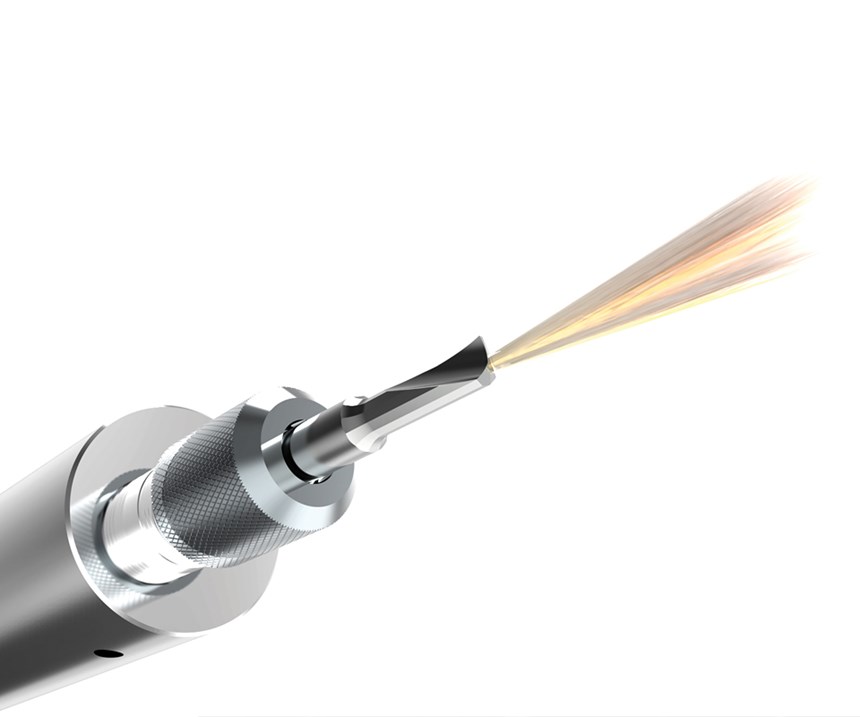







.jpg;maxWidth=300;quality=90)









